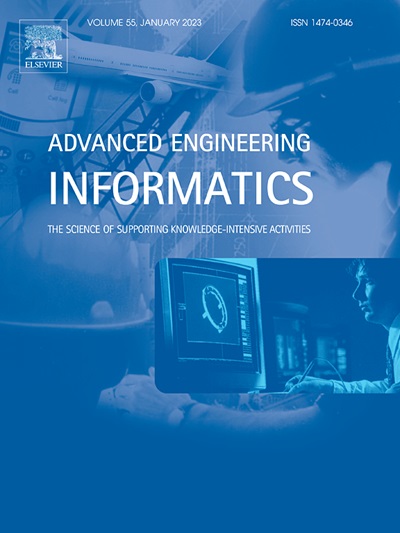Prediction of seam tracking errors in the intelligent welding system: A rapid prediction method based on real-time monitoring data
IF 8
1区 工程技术
Q1 COMPUTER SCIENCE, ARTIFICIAL INTELLIGENCE
引用次数: 0
Abstract
In the field of intelligent welding, using industrial robots to track complex shaped welds is a challenging task. When welding complex seams, the welding tools carried by industrial robots often deviate from the expected center of the weld seams. Especially during thin plate welding, thin plates are prone to random deformation because of uneven heating, which makes automatic seam tracking more difficult. The proposal of the predictive compensation control strategy for seam tracking errors provides a new approach for intelligent seam tracking. For this new approach, the rapid and accurate prediction of seam tracking errors is an important prerequisite for improving the efficiency and accuracy of the intelligent compensation system. To this end, a time-delay recursive discrete grey model (TRDGM) is proposed to predict seam tracking errors in real time. We used the new information priority accumulated generating operation (NIPAGO) to establish a time-delay grey model, and incorporated the recursive least squares method and sparrow search algorithm (SSA) to automatically optimize the parameters of the TRDGM. The prediction performance of the TRDGM was tested by seam tracking error data, which was collected during the process of thin plate automatic welding. According to industrial application requirements, one-step prediction and three-step prediction experiments were conducted. This method was compared with several typical grey models and machine learning methods. The effect of sample size on the TRDGM stability was also investigated. The results show that the TRDGM has better prediction accuracy and stability than the existing methods under small sample conditions. The TRDGM can meet the real-time requirements of automatic control, and its solution time is approximately 0.4 s with a sample size of 80. Meanwhile, the TRDGM can adapt to changes in sample size and performs well in both small and medium sample predictions. The seam tracking experiments show that compared with other prediction methods, TRDGM helps to reduce tracking errors. Based on the real-time monitoring and accurate prediction of seam tracking errors, potential welding risks can be distinguished. On this basis, it can provide operational guidance for industrial robotics to improve the accuracy of automatic seam tracking and welding quality.
求助全文
约1分钟内获得全文
求助全文
来源期刊

Advanced Engineering Informatics
工程技术-工程:综合
CiteScore
12.40
自引率
18.20%
发文量
292
审稿时长
45 days
期刊介绍:
Advanced Engineering Informatics is an international Journal that solicits research papers with an emphasis on 'knowledge' and 'engineering applications'. The Journal seeks original papers that report progress in applying methods of engineering informatics. These papers should have engineering relevance and help provide a scientific base for more reliable, spontaneous, and creative engineering decision-making. Additionally, papers should demonstrate the science of supporting knowledge-intensive engineering tasks and validate the generality, power, and scalability of new methods through rigorous evaluation, preferably both qualitatively and quantitatively. Abstracting and indexing for Advanced Engineering Informatics include Science Citation Index Expanded, Scopus and INSPEC.
 求助内容:
求助内容: 应助结果提醒方式:
应助结果提醒方式:


